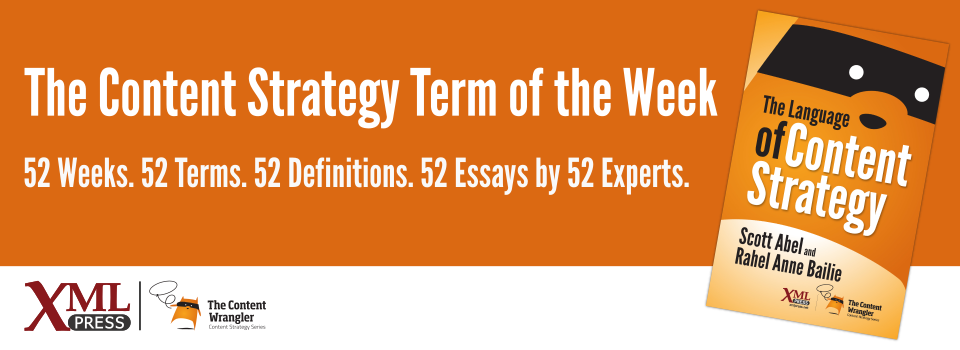The writing of a dictionary is not a task of setting up authoritative statements about the “true meanings” of words, but a task of recording, to the best of one's ability, what words have meant to authors in the distant or immediate past. The writer of a dictionary is a historian, not a law-giver.
S. I. Hayakawa (from Language in Action, Harcourt Brace, 1940)
One aspect of having been in the workforce for over three—or in the case of one of us, four—decades is that we get to watch professions spring up and mature. Information architects, interaction designers, web writers, content strategists—all professions that rose as quickly as others withered away into obscurity.
In the 1990s, we watched the discipline of information architecture spring up and take hold. In his essay on the history of the profession, Peter Morville recalls that web developers complained of “a pain with no name.”\{if http://semanticstudios.com/publications/historia.pdf} Information architecture may have alleviated that pain, but discussing information architecture created a new pain.
Negotiating deliverables was particularly difficult. Those conversations required a preamble wherein terms were defined. (What exactly do you mean when you say wireframe?) These conversations were the only way to be absolutely certain that contractors or colleagues envisioned the same concept. Eventually, as the discipline matured, terminology became codified, and practitioners could fall into discussions with the shorthand efficiency that comes with community and experience.
In 2009, the awareness of the relatively new discipline of content strategy began to spill out into the greater business consciousness. And as we found with the sister discipline of information architecture, the vocabulary for content strategy is in flux. (What exactly do you mean when you say content audit?) In a blog entry titled Dear Content Strategists,\{if http://louisrosenfeld.com/home/bloug_archive/2009/06/dear_content_strategists.html} Lou Rosenfeld, one of the elders of information architecture, suggested that language and framing is critical early on. In all fairness, his statement was about creating an association, but can equally be applied to the vocabulary used to create community. Having a common vocabulary, an accepted lexicon, is an important aspect of a mature discipline.
To paraphrase a favorite professor: your world is limited only by your vocabulary. So we brought together fifty-two contributors, each defining a term that is important to them. From Ann Rockley, who invented the term intelligent content, to Eliot Kimber, acknowledged as an expert on transclusion, to Dr. Robert Glushko, who wrote the book on document engineering, and many others, we have gathered the best and brightest to contribute their expertise to this collection.
We are honored to be able to contribute to the discipline of content strategy by providing a baseline vocabulary for practitioners to use amongst themselves and with their colleagues and clients. This book is by no means meant to be the entire lexicon of content strategy; this book is meant to standardize the basic vocabulary and expand our professional worlds.
A common vocabulary is an important aspect of the maturation of a discipline. A lexicon helps professionals across all industries, from clients and colleagues who need common terminology to have effective conversations to internal stakeholders who have diverse technical backgrounds. (What do you mean by transclusion?)
A lexicon helps hiring managers explain what they’re looking for in a job candidate and recruiters find the candidates most suited for particular projects. (Here’s what my client expects from a content strategist.) It helps students who are discovering the discipline and helps instructors who need to convey concepts that will be understood in the marketplace. (What your employer will expect in a message architecture.)
We expect this vocabulary to grow, progress, and change as time goes on, the discipline develops, and industry demands more from content strategy. This foundational work allows practitioners to conduct meaningful conversations, engage in healthy debates, and build on existing concepts and ideas. This is an opportunity to expand our vocabulary, our opportunities, and our worlds.
